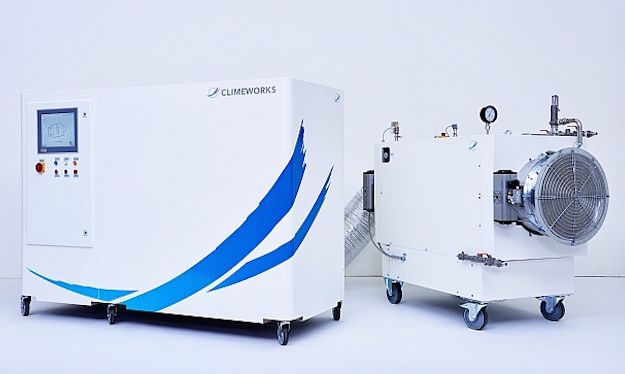Climeworks AG is not the first company to enter the industry of carbon dioxide extraction. However, it may soon be able to make a large profit while making a consorted effort towards saving the world.
Using simple technology, the company plans to remove around 1,000 metric tons a year of the greenhouse gas from the atmosphere. This total is equivalent to the carbon footprint of about 200 residents according to the company’s website. This number is not huge but it is a start. Operations will start this summer near its headquarters in Zurich when the first commercial plant becomes active.

Above is a an example of the types of machine used by the company. These machines are relatively low-tech and will provide the prospect for a revenue stream. “It’s prohibitively costly to remove CO2 from the atmosphere and there are no financial incentives in place to cover those costs, even marginally,” said Nathan Serota, analyst at Bloomberg New Energy Finance. Converting the gas into something of use to humans could prove to be an incentive.
Other, similar ideas include greenhouse gas-absorbing rocks and planting forests to make up for dreadful deforestation. These methods have not gained any ground due to their high costs and because the technology is not developed enough and would make it difficult for a large scale change to happen.
Climeworks will produce the gas for about 100 Swiss francs ($100) per ton and selling it for about 200 francs to 300 francs. Clients and customers include greenhouses which need to increase the concentration of carbon dioxide around their plants and soft drink companies which could benefit from production.
In addition to the use in carbonated drinks, carbon dioxide can be used in the packaging of foods. This helps prevent spoilage as well as the growth of bacteria. In a statement by the company, “Climeworks atmospheric CO2 can easily be post-processed to comply with the highest purity standards. Switch your CO2 supply to atmospheric CO2 and profit from the competitive advantage of using a renewable source.”
Let us all hope that this is a step in the right direction. The technology is there, we just have to stop producing so much.












